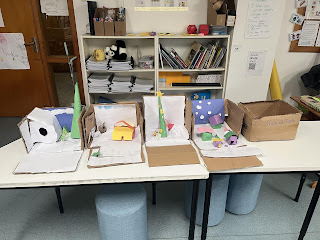Math: Connecting Fun and Real Life Applications in the PYP! - Article Written for ZIS (Zhuhai International School)
Every teacher should always have at the forefront, how they can best communicate with parents, and also support connections between school and home.
How to we create lifelong learners? How do we create inquirers? How do we foster healthy relationships between the school community and parents? How do we help educate parents in best practices with child development?
During my tenure at Chengdu Meishi International School, I designed and led a two period workshop for parents called "What is Inquiry?" wherein parents were led through the inquiry cycle, and periodically would have to complete an inquiry related activity. It shed a lot of light on the key understanding that parents should have, if their child attends a school where inquiry is paramount.
The following article is one that I wrote at Zhuhai International School to explore the teaching of maty in lower primary, and to encourage parents to take more of a hands on approach / an inquiry based approach and an approach that acknowledges that Mathematics is all around us when talking to their children. Images of students exploring the measuring of both straight and curved lines were included in the original article, but sadly cannot be posted here for reasons related to student confidentiality. I did, however, include images of some lines they were measuring during in class activities mentioned in the article.
Math: Connecting Fun and Real Life Applications in the PYP!
By: Michelle Hobbs
Many of us when we learned Math in schools, just sat at
desks being lectured to by a teacher, and then did activities in our practice
books or textbooks. While Math can be taught in that manner, Math can also be
something active and with hands on learning!
From Math stations to manipulatives to applying different
strategies and using real life applications, the world of Math is diverse and
can include many different approaches so that students can come to an
understanding of different concepts.
In a concept based math program, we want students to
conceptually understand how Math works. Math has so many applications to our
own life, from adding and subtracting, to using money, to telling the time, to
measuring areas when we want to buy new furniture. Math is a world that
students can explore, in order to make discoveries and create their own
connections and understanding. Numeracy is also a skill that can be used every
single day of our lives while we are out and about in the real world.
Measurement is something that can have a very hands-on
approach, as students measure the length, width, height and depth of different
areas, and consider real world problems and applications.
In Year 3 students have measured using real objects (paper
clips and magnets), have measured how far they have thrown balls using meters,
have considered real life applications in decorating with ribbons around doors
and have explored how measuring differs depending on if you are measuring
curved lines or compared to straight lines, they also thought about what tools
to use for each.
The pictures in the article show the realities of measuring
using straight lines, as compared to curved paths. Afterwards students were
asked to think, what tools could we use for each? What methods did we need to
use for each type of measuring?
Math is not something we need to be afraid of, on the contrary we can use it to have fun and expand our understanding and minds!
With your child you can explore math in real life too! You
might ask them questions like:
How far are we driving today?
How far did your toy car go?
How far can you throw this ball?
How much money do you have?
Do you have enough money to buy this item?
How much does this cost?
What will your change be after you buy the
thing you want?
What is the time?
How much longer will it be until lunch?
What shapes do you see in this art work?
When we start looking, we can see that math is
everywhere and that math can be fun and hands on!





Comments
Post a Comment